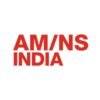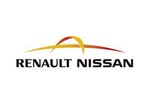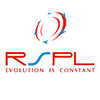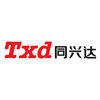Production Graduate Engineer Trainee
100+ Production Graduate Engineer Trainee Interview Questions and Answers

Asked in Alembic Pharmaceuticals

Q. What are the principles of heat transfer across all phases?
Heat transfer works on the principle of transferring thermal energy from a higher temperature object to a lower temperature object.
Heat transfer occurs through conduction, convection, and radiation.
Conduction is the transfer of heat through a material without any movement of the material itself.
Example: Touching a hot pan and feeling the heat transfer through the metal.
Convection is the transfer of heat through the movement of fluids (liquids or gases).
Example: Boiling water ...read more

Asked in Veolia

Q. 1-what is your favorite topic 2-third law of thermodynamics 3- modes of heat conduction 4-mass transfer related question
My favorite topic is heat transfer, specifically modes of heat conduction.
Modes of heat conduction include conduction, convection, and radiation.
Conduction is the transfer of heat through a material without any movement of the material itself.
Convection is the transfer of heat through the movement of fluids, such as air or water.
Radiation is the transfer of heat through electromagnetic waves.
Understanding these modes is crucial in designing efficient heat transfer systems.
Production Graduate Engineer Trainee Interview Questions and Answers for Freshers

Asked in Wood Group

Q. Which flow system is more effective: countercurrent flow or concurrent flow, and what are the reasons for this?
Countercurrent flow is more effective due to increased concentration gradient and better utilization of resources.
Countercurrent flow allows for a greater concentration gradient between the two fluids, leading to more efficient mass transfer.
Countercurrent flow also allows for better utilization of resources as the fluids are in contact for a longer period of time.
Concurrent flow, on the other hand, results in a lower concentration gradient and may lead to less efficient mass...read more

Asked in Jindal Saw

Q. What are the key features of the iron-carbon diagram, including its important phases and corresponding temperatures?
The iron-carbon diagram illustrates the phases and transformations of iron and carbon alloys at varying temperatures.
The diagram includes key phases: ferrite (α), cementite (Fe3C), austenite (γ), and liquid iron.
Ferrite is stable up to 912°C and has a body-centered cubic (BCC) structure.
Austenite forms between 727°C and 1394°C, characterized by a face-centered cubic (FCC) structure.
Cementite is stable at all temperatures and has a complex orthorhombic structure.
The eutectoid ...read more

Asked in Jindal Saw

Q. What is the structure of a blast furnace, and what are the important zones and the temperatures maintained within them?
A blast furnace is a large structure used for smelting iron, featuring distinct zones with varying temperatures for efficient metal production.
The blast furnace consists of several zones: the top, the bosh, the hearth, and the tuyere zone.
The upper zone (charging zone) operates at around 200-400°C, where raw materials like iron ore, coke, and limestone are added.
The bosh zone, located below the charging zone, reaches temperatures of 800-1200°C, where the coke burns to produce...read more

Asked in ArcelorMittal Nippon Steel

Q. 3.What is the carbon percentage represented in the iron-carbon diagram? 4. What is steel? 5.What is iron?
The iron-carbon diagram illustrates the phases of iron and steel based on carbon content, crucial for metallurgy.
The iron-carbon diagram shows carbon content from 0% to 6.7%.
Steel is an alloy primarily made of iron and carbon, typically containing 0.02% to 2.1% carbon.
Iron is a chemical element (Fe) and the primary component of steel, known for its strength and malleability.
Different types of steel (e.g., carbon steel, stainless steel) have varying carbon percentages affectin...read more

Asked in ArcelorMittal Nippon Steel

Q. 1.What are the phases represented in the iron-carbon phase diagram? 2. What is the difference between annealing and normalizing processes?
The iron-carbon phase diagram illustrates phases like ferrite, cementite, and austenite, while annealing and normalizing are heat treatment processes.
Phases in the iron-carbon diagram include: Ferrite (α), Cementite (Fe3C), Austenite (γ), and Pearlite.
Ferrite is a soft phase with low carbon content, while cementite is hard and brittle.
Austenite is a high-temperature phase that can transform into other phases upon cooling.
Annealing involves heating steel to a specific temperat...read more

Asked in Deepak Chem Tech

Q. What methods are used to determine the number of plates in a distillation column?
Number of plates in a distillation column can be found using methods like McCabe-Thiele method, Fenske equation, and Ponchon-Savarit method.
McCabe-Thiele method involves constructing equilibrium and operating lines to determine number of plates.
Fenske equation is used for binary distillation to calculate minimum number of plates required.
Ponchon-Savarit method is graphical method to determine number of plates in a distillation column.
Share interview questions and help millions of jobseekers 🌟


Asked in RGBSI

Q. Demonstrate your proficiency in a CAD tool of your choice.
I am proficient in AutoCAD, utilizing it for 2D and 3D design, drafting, and modeling in various engineering projects.
Created detailed 2D floor plans for a residential building using AutoCAD.
Developed 3D models of mechanical components for a product design project.
Utilized layers and blocks in AutoCAD to enhance design efficiency and organization.
Implemented dimensioning and annotation tools to ensure precise specifications.

Asked in Karamtara Engineering

Q. What are the details of the manufacturing process of internal combustion (IC) engines?
The manufacturing process of internal combustion engines involves casting, machining, assembly, and testing.
Casting: Engine components like cylinder blocks and cylinder heads are typically cast from materials like aluminum or iron.
Machining: After casting, components are machined to precise specifications using processes like milling, drilling, and grinding.
Assembly: Once all components are machined, they are assembled together to form the complete engine.
Testing: Finished en...read more

Asked in Megha Engineering & Infrastructures

Q. What types of concrete are used in construction?
Different types of concrete used in construction include ready-mix concrete, precast concrete, high-strength concrete, and lightweight concrete.
Ready-mix concrete is a mixture of cement, water, and aggregates that is delivered in a truck and poured on site.
Precast concrete is made in a controlled environment and then transported to the construction site for installation.
High-strength concrete is designed to withstand heavy loads and is often used in structures like bridges an...read more

Asked in Jindal Saw

Q. What is the process of centrifugal casting and how is alloy addition performed?
Centrifugal casting is a process that uses centrifugal force to produce cylindrical metal parts with uniform density and strength.
Centrifugal casting involves pouring molten metal into a rotating mold.
The rotation creates a force that distributes the metal evenly against the mold walls.
This process is ideal for producing cylindrical shapes like pipes and tubes.
Alloy addition can be performed by mixing different metals before pouring or by adding alloying elements directly int...read more

Asked in Renault-Nissan

Q. What is formula for leaf spring and cylindrical spring
The formula for leaf spring is based on the material properties and geometry, while the formula for cylindrical spring is based on Hooke's Law.
Leaf spring formula involves parameters like material modulus of elasticity, width, thickness, and length.
Cylindrical spring formula is based on Hooke's Law: F = kx, where F is the force, k is the spring constant, and x is the displacement.

Asked in Wood Group

Q. What is the procedure for designing a heat exchanger?
The procedure for designing a heat exchanger involves determining heat transfer requirements, selecting appropriate materials, designing the geometry, and analyzing performance.
Determine the heat transfer requirements based on the fluids involved, flow rates, temperatures, and desired heat transfer rate.
Select appropriate materials for the heat exchanger based on compatibility with the fluids, operating conditions, and cost considerations.
Design the geometry of the heat excha...read more

Asked in Alembic Pharmaceuticals

Q. What are the modes of Heat Transfer (HT)?
Modes of HT refer to the different ways in which heat treatment can be carried out on materials.
Annealing
Normalizing
Quenching
Tempering

Asked in Jindal Saw

Q. What is the importance of stress-strain curve, what are the mechanical testings done.
The stress-strain curve is crucial for understanding material behavior under load, guiding design and safety in engineering applications.
Illustrates material properties: The curve shows how materials deform under stress, indicating elastic and plastic behavior.
Determines yield strength: The point where the curve deviates from linearity indicates the yield strength, essential for design limits.
Identifies ultimate tensile strength: The maximum stress point on the curve helps in...read more

Asked in Reliance Industries

Q. What is quenching, normalising and properties of martensite
Quenching, normalising, and properties of martensite are heat treatment processes used to alter the properties of metals.
Quenching is a rapid cooling process used to harden metals by trapping the atoms in a specific crystalline structure.
Normalising is a slower cooling process used to refine the grain structure of metals, improving their toughness and ductility.
Martensite is a hard, brittle phase of steel formed by quenching, known for its high strength and hardness.
Propertie...read more

Asked in S.S.ENGINEERING

Q. What are different type of steels used in industry
Different types of steels used in industry include carbon steel, alloy steel, stainless steel, and tool steel.
Carbon steel: primarily made of iron and carbon, with small amounts of other elements. Examples include mild steel and high carbon steel.
Alloy steel: contains additional elements such as manganese, silicon, nickel, and chromium to improve strength, hardness, and corrosion resistance. Examples include chrome moly steel and stainless steel.
Stainless steel: contains chro...read more

Asked in JSW Steel

Q. Define portrait engine diesel engine, its capacity, and compression ratio.
A portrait engine diesel engine is a type of internal combustion engine with a capacity typically ranging from 1.5L to 3.0L and a compression ratio of around 16:1.
Portrait engine diesel engines are commonly used in passenger cars and light-duty trucks.
They are known for their fuel efficiency and torque output.
Examples of portrait engine diesel engines include the Ford EcoBlue 2.0L and the Volkswagen TDI 1.6L.
The high compression ratio in these engines helps in achieving bette...read more

Asked in Renault-Nissan

Q. How can you increase corrosion resistance in steel?
To increase corrosion resistance in steel, various methods such as coating, alloying, and controlling environmental factors can be employed.
Applying protective coatings such as zinc, paint, or polymer can help prevent corrosion
Alloying steel with elements like chromium, nickel, or copper can improve corrosion resistance
Controlling environmental factors such as humidity, temperature, and pH levels can also reduce corrosion
Asked in RSB

Q. What is a non-conventional manufacturing process?
Non-conventional manufacturing processes are those that do not involve traditional methods like cutting, drilling, or milling.
Non-traditional methods like 3D printing, laser cutting, and electrochemical machining
These processes are often more efficient and precise than traditional methods
They can also be used to create complex shapes and structures that would be difficult or impossible to produce with traditional methods

Asked in Tps Infrastructure

Q. What is the difference between a 4-stroke and a 2-stroke engine?
2-stroke engines complete a power cycle in two strokes of the piston, while 4-stroke engines require four strokes.
2-stroke engines have a power stroke every revolution, while 4-stroke engines have a power stroke every two revolutions.
2-stroke engines are generally lighter and simpler, making them suitable for applications like chainsaws and mopeds.
4-stroke engines are more fuel-efficient and produce less pollution, commonly used in cars and larger machinery.
In 2-stroke engine...read more

Asked in Gharda Chemicals Limited

Q. What is the scope of chemical engineering?
The scope of chemical engineering is vast, encompassing various industries and applications.
Chemical engineering involves the design, development, and operation of processes and systems that convert raw materials into useful products.
It is applicable in industries such as pharmaceuticals, petrochemicals, food and beverage, energy, environmental engineering, and more.
Chemical engineers work on improving efficiency, safety, and sustainability of processes, as well as developing...read more

Asked in National Organic Chemical Industries

Q. types of heat exchanger and its difference from each other
Heat exchangers are devices that transfer heat between two or more fluids.
Types of heat exchangers include shell and tube, plate and frame, and finned tube.
Shell and tube heat exchangers are the most common and consist of a shell with tubes inside.
Plate and frame heat exchangers use plates to transfer heat between fluids.
Finned tube heat exchangers have fins on the outside of the tubes to increase heat transfer.
The choice of heat exchanger type depends on factors such as the ...read more

Asked in Ptc Industries

Q. What is welding and types. What is casting and their defects.
Welding is a process of joining two or more metal pieces together by melting and fusing them. Casting is a manufacturing process where a liquid material is poured into a mold and allowed to solidify.
Welding involves the use of heat and pressure to join metal pieces.
Types of welding include arc welding, gas welding, and spot welding.
Casting defects can include porosity, shrinkage, and misruns.
Porosity is the presence of small holes or voids in the cast metal.
Shrinkage defects ...read more

Asked in RSPL Group

Q. WHAT IS BERNOULLI THEOREM? WHAT IS PASCAL LAW? WHAT IS PERT AND CPM ?
Bernoulli's theorem relates the pressure, velocity, and elevation of a fluid in a steady flow. Pascal's law states that a change in pressure applied to an enclosed fluid is transmitted undiminished to all portions of the fluid.
Bernoulli's theorem states that in a steady flow of an incompressible, frictionless fluid, the sum of pressure energy, kinetic energy, and potential energy per unit volume remains constant.
Pascal's law states that a change in pressure applied to an encl...read more

Asked in Txd (india) Technology

Q. What is electronic & communication engineering
Electronic & Communication Engineering is a branch of engineering that deals with the study of electronic devices and communication systems.
It involves the design, development, and testing of electronic circuits, devices, and systems.
It covers a wide range of topics such as analog and digital electronics, signal processing, communication systems, and control systems.
Electronic & Communication Engineers work in various industries such as telecommunications, aerospace, defense,...read more

Asked in Tps Infrastructure

Q. What is the use of a differential?
Differential is a mechanical device that allows a vehicle's wheels to rotate at different speeds while maintaining control.
Allows wheels to rotate at different speeds
Helps maintain control during turns
Transfers power from the engine to the wheels efficiently
Reduces tire wear and improves traction
Commonly found in vehicles with rear-wheel or all-wheel drive

Asked in Foxconn

Q. What components are used in the iPhone?
The iPhone comprises various components including the processor, display, battery, and camera, each playing a crucial role.
A14 Bionic chip: The powerful processor that enhances performance and efficiency.
OLED display: Provides vibrant colors and deep blacks for an immersive viewing experience.
Lithium-ion battery: Offers long-lasting power and supports fast charging.
Camera system: Includes multiple lenses for high-quality photos and videos.
Face ID: Advanced facial recognition ...read more

Asked in B.L. Agro Industries

Q. Different types of gums and how they are removed?
Different types of gums include xanthan gum, guar gum, and locust bean gum. They are removed through various methods depending on the type of gum.
Xanthan gum is commonly used in food products as a thickening agent and can be removed by simply washing it off with water.
Guar gum is another common food additive that is used as a thickener and can be removed by soaking it in water and then straining it out.
Locust bean gum, also known as carob gum, is used in food products as a st...read more
Interview Questions of Similar Designations
Interview Experiences of Popular Companies






Calculate your in-hand salary
Confused about how your in-hand salary is calculated? Enter your annual salary (CTC) and get your in-hand salary


Reviews
Interviews
Salaries
Users










